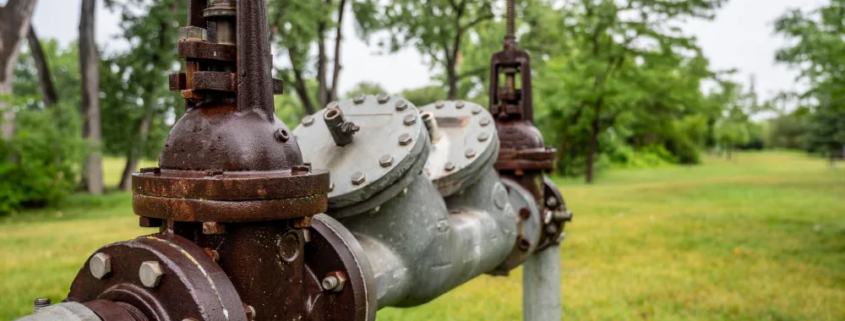TL;DR: How Backflow Preventers Protect Your Water
What does a backflow preventer do? It’s a simple device with an important job—keeping your drinking water clean and safe. In this short guide, you’ll see how it works, when to test it, and why maintenance is so important.
- Understand how a backflow prevention device works to stop dirty water from reversing into clean lines.
- Discover the main types of backflow preventers and where each one is used.
- Learn how to spot, test, and maintain your plumbing backflow preventer for lasting reliability.
- Identify warning signs of failure and why annual testing is required.
- See why regular service saves money and ensures your system meets local code.
Keep your water supply clean, compliant, and protected year-round.
Clean, safe water starts with a line of defense. When pressure drops, a backflow preventer keeps your supply safe from contamination. It protects health, ensures code compliance, and brings peace of mind.
Let’s see how a backflow prevention device works. You’ll also learn what a backflow valve does in your system to prevent contamination.
How Does a Back Flow Prevention Valve Protect Your Drinking Water?
Water should move in one direction, from the city main to your faucets. Pressure changes can flip that flow. A broken main, a fire truck drawing water, or a pump shutting off can pull water backward. When that happens, contaminated water can enter your supply.
Imagine your garden sprinklers running with fertilizer in the line. A sudden pressure drop can pull that mix back toward your taps.
That’s where a plumbing backflow preventer comes in. It blocks the reversal with one-way valves and relief parts. In short, this backflow prevention valve keeps clean and dirty water from ever mixing.
Backflow Explained: When Water Reverses and Carries Contaminants
Back-pressure happens when downstream pressure rises above the supply. It forces water to flow backward. Back-siphonage is the opposite, where a drop in supply creates suction. A burst main can pull lawn chemicals into household lines.
Inside the Device: Check Valves, Relief Port, and Air Gaps
A check valve allows flow one way, then shuts when water reverses. A pressure relief valve releases unsafe water outside your pipes. An air gap uses open space to separate water and air, a physical break that stops mixing.
Where You Need Protection at Home and Work
- Cross-connections need protection on these connections at home and work:
- Irrigation systems and yard sprinklers
- Hose bibs using chemical sprayers
- Boilers and hydronic heat loops
- Fire protection systems
- Commercial kitchens and beverage machines
- Local codes usually require it.
Types of Backflow Preventers: Choosing the Right Protection
Different setups call for different devices.
An RPZ (reduced pressure zone assembly) offers the highest protection. It handles both backpressure and back-siphonage and is used in higher-risk systems.
A DCVA (double check valve assembly) uses two check valves to protect low- to medium-risk systems like indoor plumbing loops.
A PVB (pressure vacuum breaker) guards against back-siphonage, making it ideal for irrigation lines.
An air gap is simply open space between an outlet and the flood level—often used for sinks and tanks.
Your plumbing backflow preventer should match the hazard level and location, following local code. Homes usually use a PVB or DCVA, while commercial kitchens and labs often need an RPZ or air gap for stronger protection.

Do You Already Have One? How to Spot and Label It
Look for a brass valve assembly with test ports and a tag near the meter, irrigation line, or boiler. Check past test reports or ask your water utility for records.
Maintenance and Testing
Internal parts wear out over time, grit can block valves, and cold snaps can crack seals. Pressure swings may expose faults an old unit can’t handle. Annual testing confirms the device opens, closes, and seals when it should.
Many cities require certified testers to file reports with the water authority. Routine service protects health, avoids fines, and catches small issues early.
Warning Signs Your Backflow Preventer May Be Failing
- Dripping from the relief port
- Low or erratic water pressure
- Visible corrosion or mineral crust
- Buzzing or chattering noises
- Failed test tag or past due date
Testing Schedule, Local Rules, and Certified Testers
Most areas require annual testing, sometimes after installation or repair as well. Hire a certified professional and keep copies of reports for insurance and compliance.
Simple Care Between Tests
Keep the area clear so valves can be reached. Use insulation or a rated cover to stop freezing. Outdoor and sprinkler systems need extra protection. Don’t hang hoses or chemicals on the assembly and check the tag date.
Cost of Neglect vs. Routine Service
A quick annual test costs far less than the cleanup from a contamination event. Spend a little now to avoid a costly mess later
Don’t Leave Water Safety to Chance
A backflow preventer protects your clean water and stays reliable with regular maintenance. Check the tag and book your annual test. It’s a small task that protects your health, saves money, and keeps your water safe year-round.
Treat your plumbing backflow preventer like a seat belt—simple and always worth using. Learn more about our backflow installation and inspection repair services here.







Leave a Reply
Want to join the discussion?Feel free to contribute!